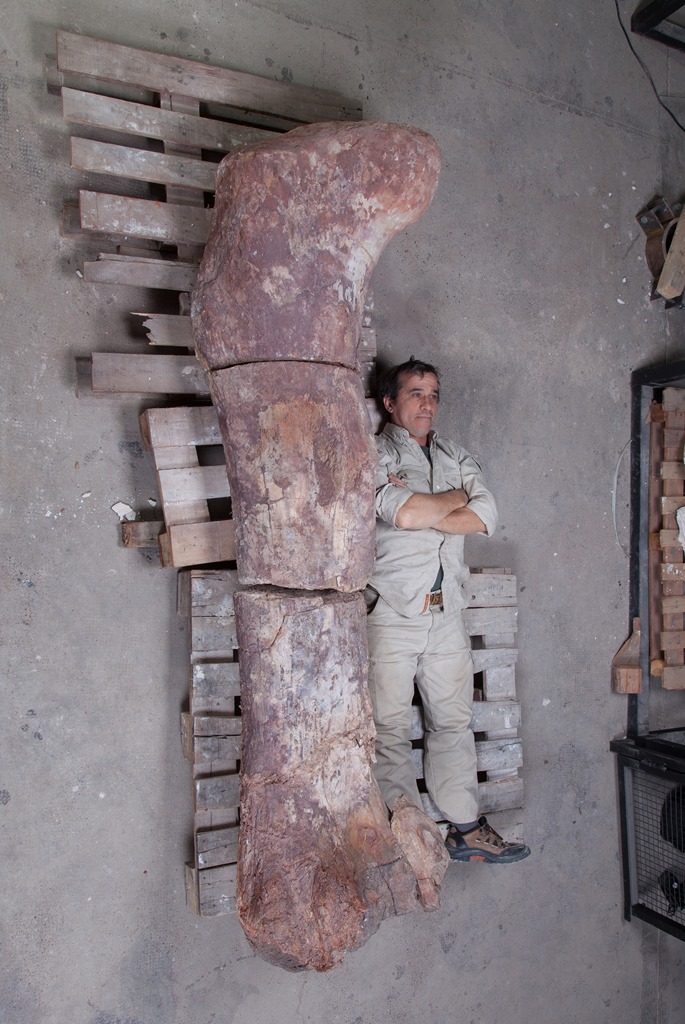One of World's Biggest Dinosaurs Unearthed in Argentina

The bones of seven huge dinosaurs that each weighed more than a dozen elephants and had femurs bigger than a human adult have been discovered in Argentina, scientists announced.
The plant-eating beasts plodded across South America 95 million years ago, during the Mesozoic Era, and they may represent a new species. The creatures may even be the biggest dinosaurs known, outshining their long-tailed, long-necked titanosaur cousins like Argentinosaurus, said the paleontologists who excavated the bones.
Using jackhammers, shovels and even bulldozers, researchers of the Museum of Paleontology Egidio Feruglio in Argentina's Patagonia region removed the fossils from a site in the center of Chubut province, about 160 miles (260 kilometers) from the city of Trelew. A farm worker first discovered dinosaur bones there in 2011. So far, scientists have found more than 200 fossils at the site, including leg bones, vertebrae, teeth and tail bones. [See Photos of the Dino Discovery]
The amazing state of preservation of the bones is rare. The animals, all adults, appear to have died around the same time. The researchers speculate that they they succumbed to dehydration or got stuck in the mud while gathering around small pools of water to drink. In this deadly graveyard, the reptiles may have become food for scavengers like carnivorous dinosaurs in the Tyrannotitan genus.
Based on the fossils of the newfound herbivore sauropod, which has yet to receive a name, scientists think it would have stretched 131 feet (40 meters) in length and weighed 80 tons (73 tonnes).
"It's like two semi trucks, one after another, and the equivalent of more than 14 African elephants' weight together," researcher José Luis Carballido, of Museum of Paleontology Egidio Feruglio in Argentina's Patagonia region, said in a statement.
Follow Megan Gannon on Twitter and Google+. Follow us @livescience, Facebook & Google+. Original article on Live Science.
Get the world’s most fascinating discoveries delivered straight to your inbox.

